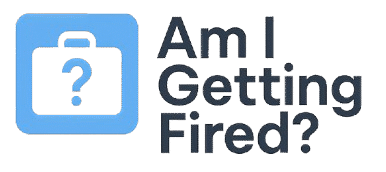Employment Burnout
Exhausted by work — even when you’re technically doing “okay”? That could be employment burnout. This isn’t just stress from a bad boss or a rough week. It’s a deeper sense of weariness from the very idea of being employed.
Whether you’re remote, in-office, or juggling multiple roles, employment burnout is a growing issue in 2025. Below, we’ll break down the symptoms, causes, and risks — including how it might be quietly sabotaging your job security.
What Is Employment Burnout?
Employment burnout refers to the physical, emotional, and mental exhaustion that builds over time simply from being employed in an unhealthy or unsustainable way. It doesn’t always come from a toxic workplace — sometimes it’s just too much, for too long.
It’s especially common in:
- High-pressure industries (tech, finance, healthcare)
- Jobs with poor work-life balance or long hours
- Roles with constant urgency or unrealistic deadlines
- Remote workers who never “log off”
Top Symptoms of Employment Burnout
- Overwhelm: Even small tasks feel heavy or unmanageable
- Chronic fatigue: Sleep doesn’t fix your exhaustion
- Lack of fulfillment: Your job feels pointless, even if it’s important
- Detachment: You feel emotionally disconnected from work and coworkers
- Low productivity: You’re doing the bare minimum — or struggling to
Real-World Insight
In late 2024, a study by Future Workplace and Blue Beyond Consulting reported that over 60% of employees feel emotionally detached from their jobs. That’s not just apathy — it’s a major burnout warning sign. And it affects everything: performance, attitude, and perceived value.
Takeaway:
Burnout isn’t laziness. It’s a real occupational hazard that builds over time — and if your manager senses it, your job could be at risk.
Why Employment Burnout Matters to Your Boss
Even if you’re still showing up, signs of burnout can trigger red flags. Managers may see:
- Declining quality of work
- Less engagement in meetings
- Slow response times or missed deadlines
In competitive environments, burnout can be mistaken for poor attitude or performance — and that puts you on thin ice.
What To Do About Employment Burnout
- Start tracking your workload: Know when you’re at capacity
- Schedule breaks like meetings: Don’t wait until you crash
- Talk to HR or your manager: Transparency matters more than silence
- Use our AI tool: Check if you’re on the radar for being fired
Don’t Wait for Burnout to Get Worse
If you’re starting to hate work altogether, it’s time to act. Whether that means stepping back, shifting roles, or preparing for a career move — awareness is the first step.
Check If You’re at Risk of Being Fired
Our free tool helps you analyze your current work behaviors, manager dynamics, and performance trends to flag whether you’re in a danger zone.
Click here to use our AI scanner now.
Internal Links
FAQ: Employment Burnout
How do I know if I’m experiencing employment burnout?
If you feel emotionally drained, disinterested, and struggle to complete tasks that once felt routine — you may be burned out.
Is employment burnout different from job burnout?
Yes. Job burnout is often role-specific, while employment burnout is broader — it affects how you feel about working in general.
Can burnout cause me to lose my job?
Indirectly, yes. If burnout affects your performance, communication, or presence at work, it can lead to termination over time.
How long does it take to recover from burnout?
It varies. Some people recover in weeks with rest and boundaries. Others may need deeper changes like a role shift or career break.
Should I quit if I’m burned out?
Not immediately. First, use a tool like ours to check if you’re at risk of being fired — then decide if quitting or staying is smarter long-term.
